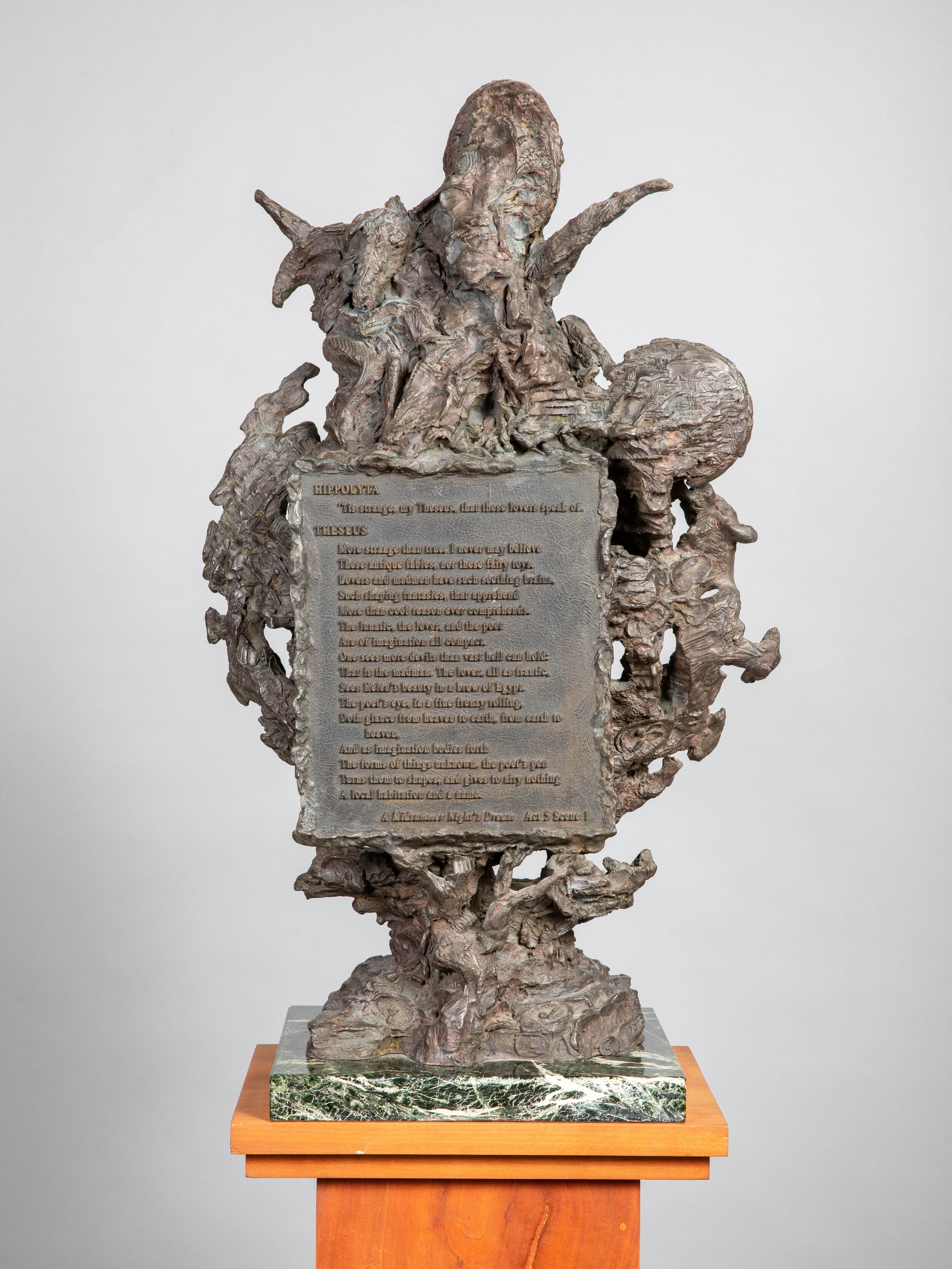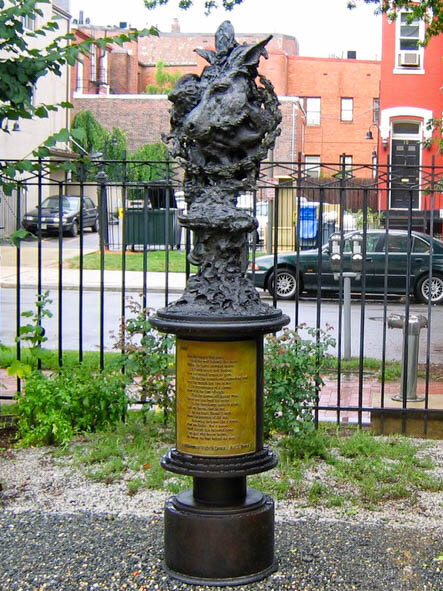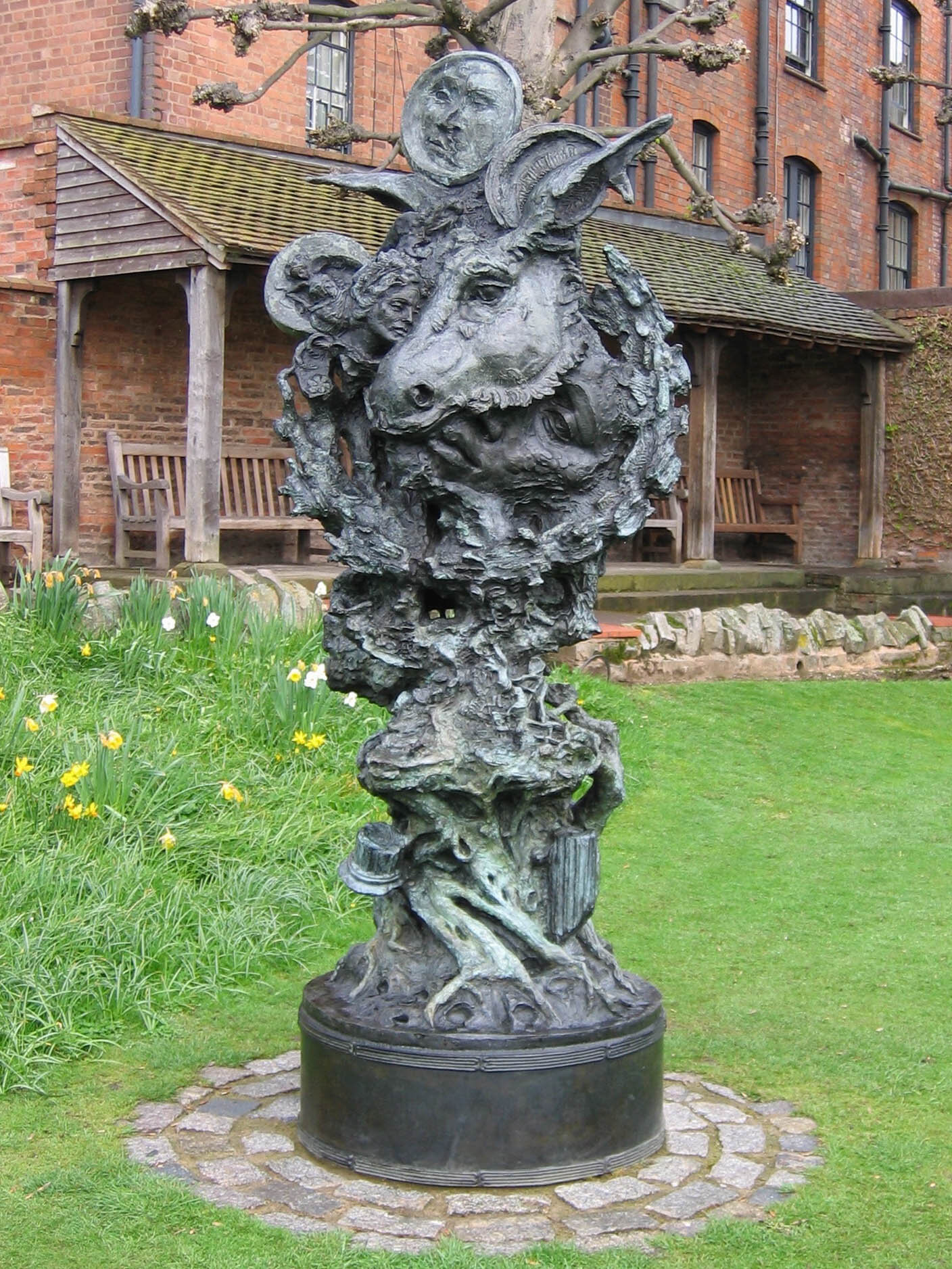A Midsummer Night’s Dream
Bronze Monument, 2004
Folger Shakespeare Library
Washington, D.C.
A full-scale A Midsummer Night’s Dream monument is permanently placed in the collection at Shakespeare’s Great Garden of the Shakespeare Birthplace Trust, Stratford-Upon-Avon, U. K; a half-scale monument is permanently placed at the Folger Shakespeare Library in Washington D. C. This work is a fantastic interpretation of Shakespeare’s play that interweaves human and animal figures, organic forms and textures, and geometric and classical elements; together, this enchanted forest bursts forth from Shakespeare’s play in three-dimensional sculpture. These forms include, for example: the embracing figures of Bottom and Titania, mushroom gardens, the shapes and shadows of the moon, and the classical columns that remind viewers of the play’s Athenian setting. In the wax models of this work, one of Greg Wyatt’s inventive artistic styles can be observed: the application of encaustic painting techniques to three-dimensional forms. Encaustic painting, painting with layered wax, was the first stage in the Northern European re-invigoration of the materiality of color, leading way to the use of egg tempera paints and later oil painting, and was especially prominent in early medieval religious works of art. It was previously used by the ancient Greeks to coat color onto their statuary sculptures. Greg, in his commitment to the evolution of materiality and the devoted study of the model-to-monument sculptural process, applies the sensibilities of encaustic painting to three-dimensional works in varying mixtures of beeswax and paraffin wax in differing colors, textures, and densities. These artistically brilliant applications of color theory result in a textural and material expression of a “Wyatt-esque” Encaustic Patina, as coined by Professor Antonio Rutigliano of New York University’s Gallatin School of Individualized Study.




